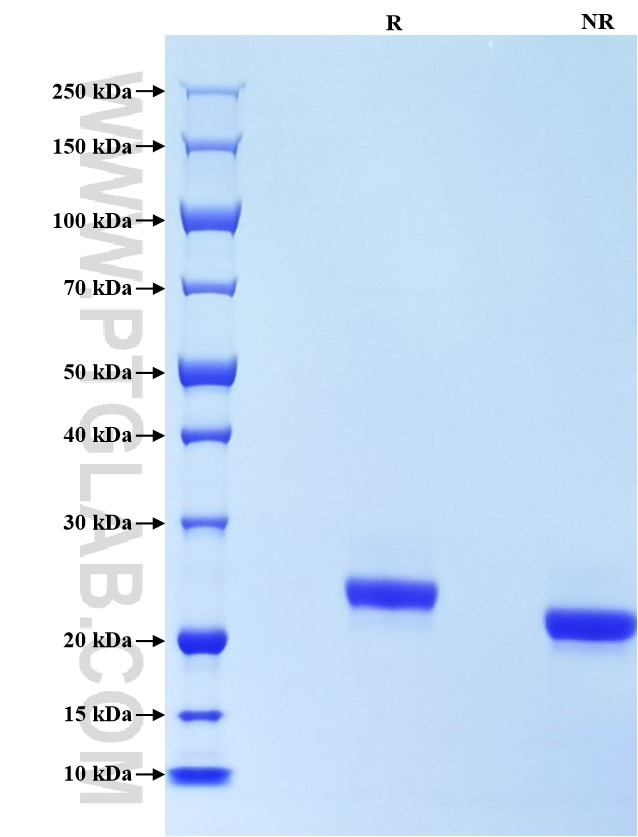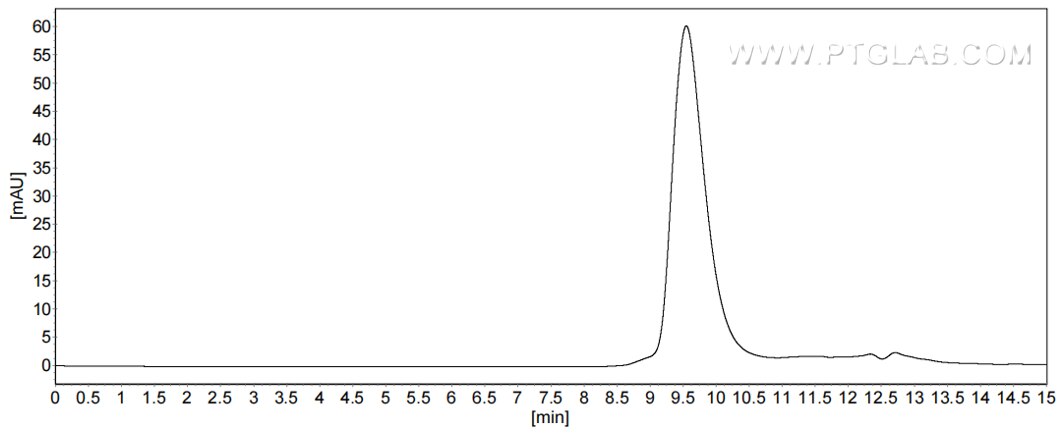Recombinant Mouse Lipocalin-2/NGAL protein (His Tag)(HPLC verified)
Species
Mouse
Purity
>90 %, SDS-PAGE
>90 %, SEC-HPLC
Tag
His Tag
Activity
not tested
Cat no : Eg0572
Validation Data Gallery
Product Information
| Purity | >90 %, SDS-PAGE >90 %, SEC-HPLC |
| Endotoxin | <0.1 EU/μg protein, LAL method |
| Activity |
Not tested |
| Expression | HEK293-derived Mouse Lipocalin-2 protein Gln21-Asn200 (Accession# P11672) with a His tag at the C-terminus. |
| GeneID | 16819 |
| Accession | P11672 |
| PredictedSize | 22.3 kDa |
| SDS-PAGE | 23-25 kDa, reducing (R) conditions |
| Formulation | Lyophilized from 0.22 μm filtered solution in PBS, pH 7.4. Normally 5% trehalose and 5% mannitol are added as protectants before lyophilization. |
| Reconstitution | Briefly centrifuge the tube before opening. Reconstitute at 0.1-0.5 mg/mL in sterile water. |
| Storage Conditions |
It is recommended that the protein be aliquoted for optimal storage. Avoid repeated freeze-thaw cycles.
|
| Shipping | The product is shipped at ambient temperature. Upon receipt, store it immediately at the recommended temperature. |
Background
Neutrophil gelatinase-associated lipocalin (NGAL) also known as Lipocalin-2 (LCN2), is a secreted glycoprotein that belongs to the lipocalin protein family. Several roles of NGAL was identified, including iron trafficking, chemotactic, and promote cell differentiation and proliferation. NGAL was originally found in neutrophils, and expressed in tissues containing renal, uterus, liver, spleen, as well as cardiomyocytes, neurons and immune cells. NGAL is a significant biomarker of cardiovascular diseases, ischemic stroke, acute renal injury, inflammation and metabolic diseases.
References:
1. Bauvois B. et al. (2018). Cancers (Basel). 18;10(9). 2. Buonafine M. et al. (2018). Clin Sci (Lond). 132(9):909-923. 3. Abella V. et al. (2015). Biomarkers. 20(8):565-71. 4. Devarajan P. et al. (2008). Scand J Clin Lab Invest Suppl. 241:89-94.


